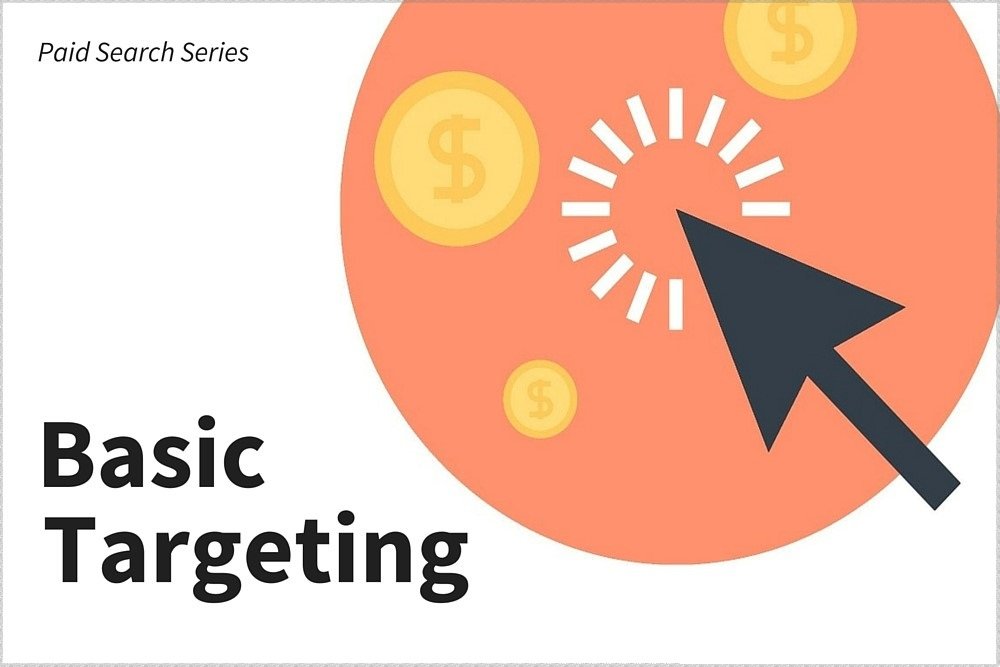At The frank Agency, we utilize a lot of different paid search methods to generate results for our clients. Follow along with our paid search blog series as we explore different tools and targeting methods – and learn more about how we can use paid search to improve your company’s performance and increase ROI. In our first post of the series we’re exploring basic targeting options.
How PPC Targeting Works
Last time you conducted a search online, you probably noticed the results at the top of the page labeled “Ad”. These are pay per click ads, and they’re triggered to display based on the term you’re searching for. Every time you search for a term, the search engine conducts an “auction” between different advertisers who are “bidding” on the term to decide which ads display and in which order.
Here’s how it works:
- PPC advertisers select keywords that are relevant to their products or services, and select a page that they want their ad to be linked to. They then set “bids” for how much they’re willing to pay for each click on their ad.
- Search engines send their “crawlers” to the page selected to evaluate the content the ad directs to and apply a quality score based on how relevant the page is to the selected keywords.
- During the “auction” portion, the search engines take into account the quality score and bid of each individual advertiser to determine the order the ads will display on the search results page.
Adjusting the keyword selection, targeting options and the bids associated with those keywords is one of the easiest ways advertisers can optimize their return for every dollar spent on advertising.
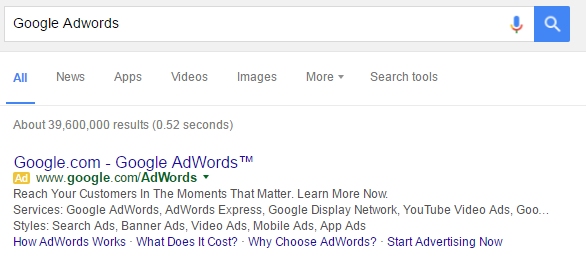

Keyword Targeting Options
Keyword selection is one of the most important parts of building a PPC account. Search engines match search queries to keywords through one of four match options: Broad, Modified Broad, Phrase and Exact.
Broad Match – Broad match is the default match type for keywords. It allows ads to display for search queries that include the keyword, close variations of the keyword, and words that are similar in meaning or subject matter. Broad match keywords can be a great asset to an account, but sometimes the searches targeted with these keywords can include too many irrelevant searches making these keywords commonly less profitable for advertisers.
Modified Broad Match – “Mod broad” keywords are distinguished by the addition of a plus-sign directly before words that an advertiser wants to require in the search query. Only search queries that contain all the words designated will be included.
Phrase Match – Phrase match keywords are commonly labeled with quotation marks on either end. Phrase match keywords require that the search query include a specific combination of keywords.
Exact Match – Exact match keywords are the most exclusive keyword targeting option. This match type is marked with brackets on each end of the keyword. Exact match keywords require that the search query match the keyword precisely.
Negative Match – Advertisers can also add keywords with any of the above match types as negative keywords. These keywords will exclude ads from searches matching the negative keyword.
Other Targeting Options
Another important element of PPC advertising is identifying the right place, time and device for a user to see their ad. Aside from keyword selection, there are a number of other targeting options that allow advertisers to narrow down which users see their ads and when. Google Adwords offers targeting options for geography, ad scheduling, language and device targeting (mobile, tablet, or computer).
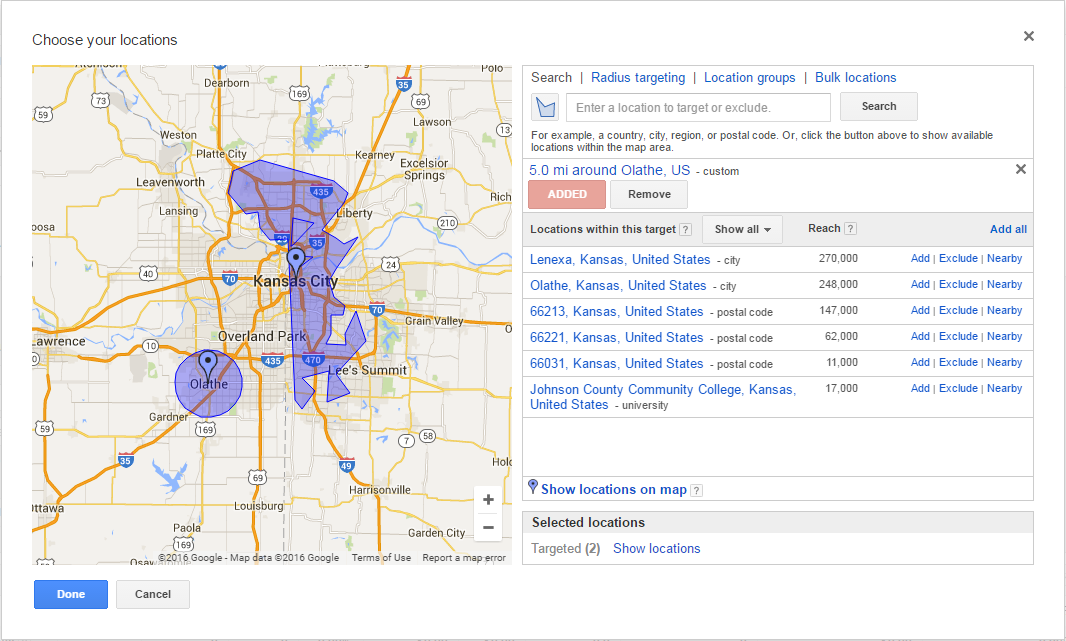

Geotargeting – Geographical targeting is divided up into two options: Targeting users that are physically located within a specified geographical area, or targeting users that are searching about a specific geographical area. Geotargeting has the potential to be finely tuned, offering advertisers the ability to target specific users by a radius around specific locations (including latitude-longitude coordinates), by location-specific borders such as state lines or city limits, or by Designated Marketing Area (DMA) – all of which gives advertisers a very high level of control over who is eligible to view their ads.
Ad Scheduling – This feature allows advertisers to select what hour of the day and day of the week their ads are displayed.
Language Targeting – This feature allows advertisers to include or exclude target users that speak specific languages. This setting defaults to including English speaking users.
Device Targeting – Device targeting allows advertisers to target searchers that are using specific devices, such as computers, tablets and mobile phones.
Audience Segment Tracking
But wait! There’s even more. Other available targeting options allow advertisers to break up the search traffic into audience segments, allowing you to target by demographic, topic and interests. These options are applied to ads outside of the search engine results page, but can include text ads, banner ads, video ads and other ad types.
Demographic – Demographic targeting includes targeting options such as gender, marital status, parental status and age.
Topic – Topic-based targeting allows advertisers to display ads to users that are browsing content related to broad overlying subject groups. This targeting option focuses on the type of content on the website the ad is displaying on, rather than anything specific to the user. Examples of these groups are: Advertising, Arts & Entertainment, Automotive, Finance, Health, Retirement and many more. This option allows advertisers to get their ads in front of people who have similar interests.
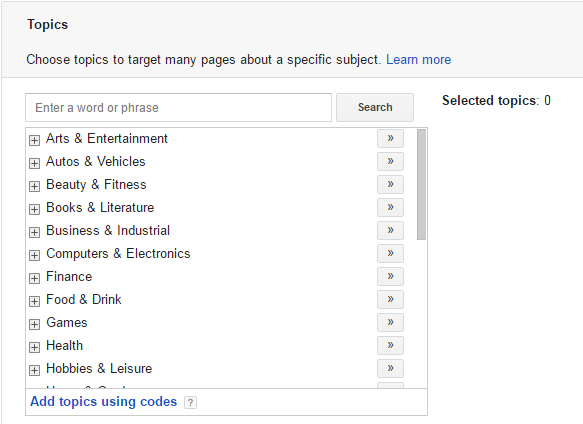

Interest – Interest-based targeting is a more user-focused version of topic targeting. This targeting allows the ad to be displayed on websites that may not be related to the subject of the ad, but the ad will only be displayed to users who have demonstrated a specific interest. For example, an ad targeted to users who have been tagged as interested in “advertising” might display to a user on a news site after they recently visited an online computer component retailer’s website.
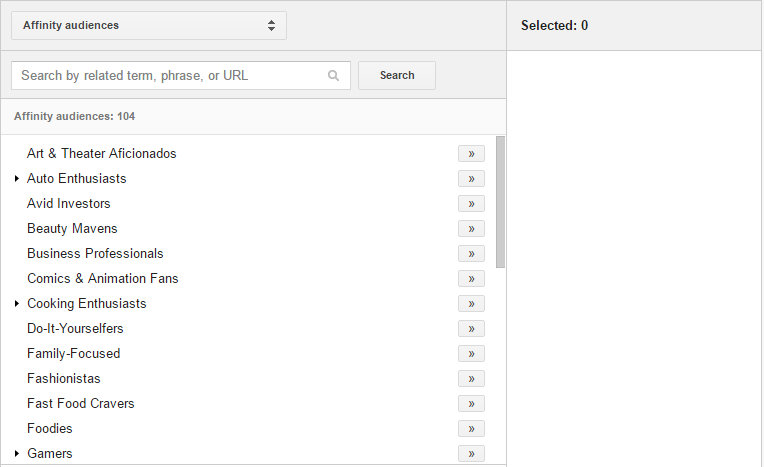

Target the Right People
To ensure the right users are seeing the ads, it’s crucial for PPC advertisers to select appropriate settings for each of these targeting options and adjust them over the life of the account. Keyword selection, ad creative, and targeting options all supply the tools necessary for advertisers to select a specific audience for any ad, which helps maximize the effectiveness of their ads.
Feeling overwhelmed? There’s a lot that goes into managing a paid search account – and a lot more than basic targeting options. (We’re just getting started here.)
If you want to learn more about paid search and the variety of ways you can target a customer, tune in again soon for the next part of our paid search blog series. Don’t want to wait that long? Contact us today! As an experienced paid search agency, we’ve got the expertise you need to manage your company’s paid search to increase profits.

